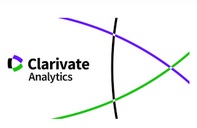Test anxiety and coping styles with academic stress in university students
Abstract
The studies of the relationship between test anxiety and ways of coping generally have provided mixed results. In order to clarify these relationships, in this paper was explored the differences in coping styles with academic stress in 816 college students with low, moderate and high test anxiety. Additionally, was examined the relationships between each coping style and the four dimensions of test anxiety. Multivariate analysis of variance (MANOVA) provided significant differences in coping styles ac- cording to the anxiety level; more anxious students are characterized by self-blame and self focused rumination coping styles and less anxious by approach and accommodation coping styles. Partial correlations between each dimension and coping indicated that worry was positively associated with approach, a more adaptive coping style that contribute to preparation and study, while interference and lack of confidence are linked to dysfunctional styles. Results are discussed in the framework of the processing efficiency theory and are discussed the implications for test anxiety treatment.Downloads
Download data is not yet available.
Metrics
Views/Downloads
-
Abstract20686
-
PDF (Español (España))13314
Piemontesi, S. E., Heredia, D. E., Furlan, L. A., Sánchez Rosas, J., & Martínez, M. (2012). Test anxiety and coping styles with academic stress in university students. Anales De Psicología Annals of Psychology, 28(1), 89–96. Retrieved from https://revistas.um.es/analesps/article/view/140562
Developmental and Educational Psychology
About Copyright and Licensing, more details here.










